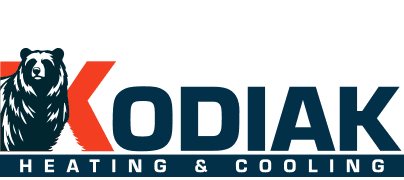What Should an HVAC Replacement Cost?

What should an HVAC replacement cost? Great question, it depends (but don’t worry, I’ll actually get into some pricing below)!
When you shop for a high-ticket home service item like an HVAC system, bathroom remodel, new deck, or new roof, most people will tell you to get at least 3 quotes to make sure prices are competitive. When homeowners do this, they often find that prices vary significantly for these services.
Now I can’t speak to all of these, but as an HVAC business owner in the greater Charlotte area, I can dive into what drives prices for HVAC replacements (air conditioners, furnaces, heat pumps, etc.).
Types of HVAC Companies
First, I will briefly discuss the types of HVAC companies, as this will be important in the coming breakdown.
- ‘A Man in Van’: The name says it all. Now, if you can find ‘a man in a van’ who does a good job, this will typically be the most affordable option. The problem I have seen here is that for every good man in a van, there are 10 really bad ones, and you don’t know which one yours is until it’s too late. The other con here is availability. If they are on vacation, their schedule is booked, they get sick, then the wait to get someone out and repair your system when you need it most could be weeks.
- Small to Medium (Locally Owned): These businesses will charge slightly more than ‘a man in a van’ due to the overhead required to run a business. Just like in any category, there are good ones and bad ones, so you have to make sure you do your research. Some companies of this size will try to act like a larger company, and you will end up paying top-of-the-market prices. If you find a good company in this category, you should get quality work at a fair price and a company that honors its warranty on equipment and labor.
- Large (Private Equity Owned): Over the last 10–15 years, private equity companies have been buying up residential services businesses like crazy. Most large HVAC companies you find are private equity owned. While there is nothing inherently wrong with that, it does create some unintended consequences, such as much higher prices and a culture of pushing for replacements to earn a commission. The pro here is that they are usually always available for an emergency, but that does come with a steep price.
What Drives HVAC Replacement Costs?
Now that we have established the types of HVAC companies, let’s dive into the breakdown that drives the final sales price. Since we are going into heating season, I will use a furnace replacement as an example here.
1. The Equipment or HVAC Product
The first major component of a replacement is the equipment, which has a wide range of costs, from an 80% 40,000 BTU single-stage ECM motor furnace to a 97% 120,000 BTU two-stage variable speed communicating furnace. The prices here can range from as little as $800 to over $4,000, depending on the brand.
One thing to note is that the smaller the company, the more expensive the equipment tends to be since they have less buying power and thus a higher dealer cost, which means less savings passed on to you.
2. Materials and HVAC Installation Permits
Standard materials, permits, and minor modifications are pretty predictable on most types of installs. Recently, companies have shifted to a flat rate of $500–$800, depending on what services they include as part of their standard installation.
3. Add-On HVAC Services and Accessories
Things like smart thermostats, duct cleanings, or IAQ products are usually never included in a standard estimate. These things should be decided on a case-by-case basis according to a homeowner’s want or need.
For the purpose of this exercise, we will exclude any add-ons.
4. HVAC Installation Labor
There are three ways companies charge labor.
- Commission-Based Labor Fee: Larger companies tend to be commission-based, so they will pay the installation crew 7%–10% of the job price.
- Flat Rate Install Labor Cost: Some companies will pay the installer a flat fee depending on the installation type.
- Hourly Wage for HVAC Install: Other HVAC companies choose to pay a regular hourly wage to their installation team.
Direct labor on a furnace installation will typically range from $600–$1,200, depending on how the company pays their employees.
5. Modifications
As mentioned before, minor modifications are usually covered by the standard flat rate for the Materials and Permits charge. However, larger modifications might be needed due to code requirements or the type, size, or age of the equipment currently at a home.
This includes things like going from a 3” flue to a 4” flue, converting a crawlspace furnace from an 80% to a 90%, adding a fresh air intake to a crawl, high-voltage electrical upgrades, access issues, and more.
While these are not the most common issues, they occur frequently enough that most contractors are reluctant to provide a price over the phone. If they do, it’s always contingent on seeing the job site before final approval.
6. Finance Fee
Most HVAC contractors charge around 3% in processing fees to take payments. If a customer uses financing, the finance company can also charge a 5%–10% “financing fee” which is typically passed on the the customer or charged directly to the customer; some even going as high as 20% for the longer-term, interest-free options.
Be wary and do the math regarding long-term, interest-free financing options with a high finance fee. These fees can often negate the benefits of the perceived savings of having a no-interest loan.
That being said, most of the industry is starting to take a weighted average across all their jobs and use a flat 3%–5% fee as part of the install price for all of their services (again, unless they offer the 60–120 months interest-free plans, then the fee may be listed as much more).
7. Sales Commission
Larger companies pay salespeople and technicians anywhere from 5%–10% of the job price in commission. Small to medium companies will pay 3%–5% or a SPIFF. A ‘man in a van’ does not pay sales commission.
While there is nothing wrong with paying someone a commission, we always want to think about the unintended consequences. If a tech’s compensation is highly tied to replacement commission, then what are they incentivized to do? Sell replacements, not repairs.
This is probably one of the biggest issues I see in the home services space. As a business owner, I obviously want my techs to sell, but I don’t want them to lie or be dishonest just to make a few extra dollars. I believe it is not only bad practice but also a stain against a company’s reputation to act in such a manner.
As an industry, we need to be better at this and at Kodiak Heating and Cooling, we make every attempt to generate a healthy and positive company culture that promotes solving customer needs over padding pockets. So if your HVAC system can make it through the season with a repair, that’s what you’ll get from us.
8. Overhead and Profit (Margin)
So up until this point, the real driver of price so far has been how a company pays labor, what financing they offer, and what commission they pay, but the biggest driver of price overall is the company margin.
Margin takes into account a company’s overhead and how much money it wants to make (profit). The bigger the company, the more overhead it has, and likely the more profit it seeks. The smaller the company, the less overhead it has, and it is typically more conscious of profit margin.
Other factors considered here are seasonality and benefits for employees. Our goal is to retain our employees year-round and provide them with benefits. The guys working in the 130+ degree attics in the middle of summer should have PTO, health benefits, and year-round employment.
A larger company might run at a 60%–70% gross margin, a medium-sized company at 40%–50%, and ‘a man in a van’ at 30%. Larger companies aim for a 25%–30% profit, while small to medium companies target 10%–20%.
HVAC Cost Example
Let’s do a real-world example of what an HVAC replacement will cost. Continuing with our seasonal example of a furnace replacement, we will assume the customer has agreed to install a standard 80% 80,000 BTU single-stage ECM motor furnace.
What would the price of the furnace replacement look like for each type of HVAC company? Let’s assume there are no add-ons, major modifications, or crazy interest-free financing fees; just a standard installation.
- ‘A Man in Van’ Furnace Installation Cost: $3,500–4,000
- Small to Medium (Locally Owned) Furnace Installation Cost: $4,500–5,300
- Large (Private Equity Owned) Furnace Installation Cost: $8,000–10,000
Contact Kodiak Heating and Cooling for HVAC Installation Quote
Investing in a new HVAC system is a big decision and understanding installation costs (and everything that drives that cost) can help you make an informed choice—not only about the type of equipment to install but the type of HVAC company you search for to get the job done.
Kodiak Heating & Cooling is here to guide you every step of the way. Serving the greater Charlotte area, we’ll help you find the right solution for your home, your budget, and your comfort goals. With Kodiak Heating and Cooling, you get professionalism and honesty, always.
Contact us today at 704-266-3624 or request service online to request a free estimate or schedule your professional HVAC installation!
Prices and cost estimates referenced in this post are accurate as of the time of publication and are subject to change without notice.
